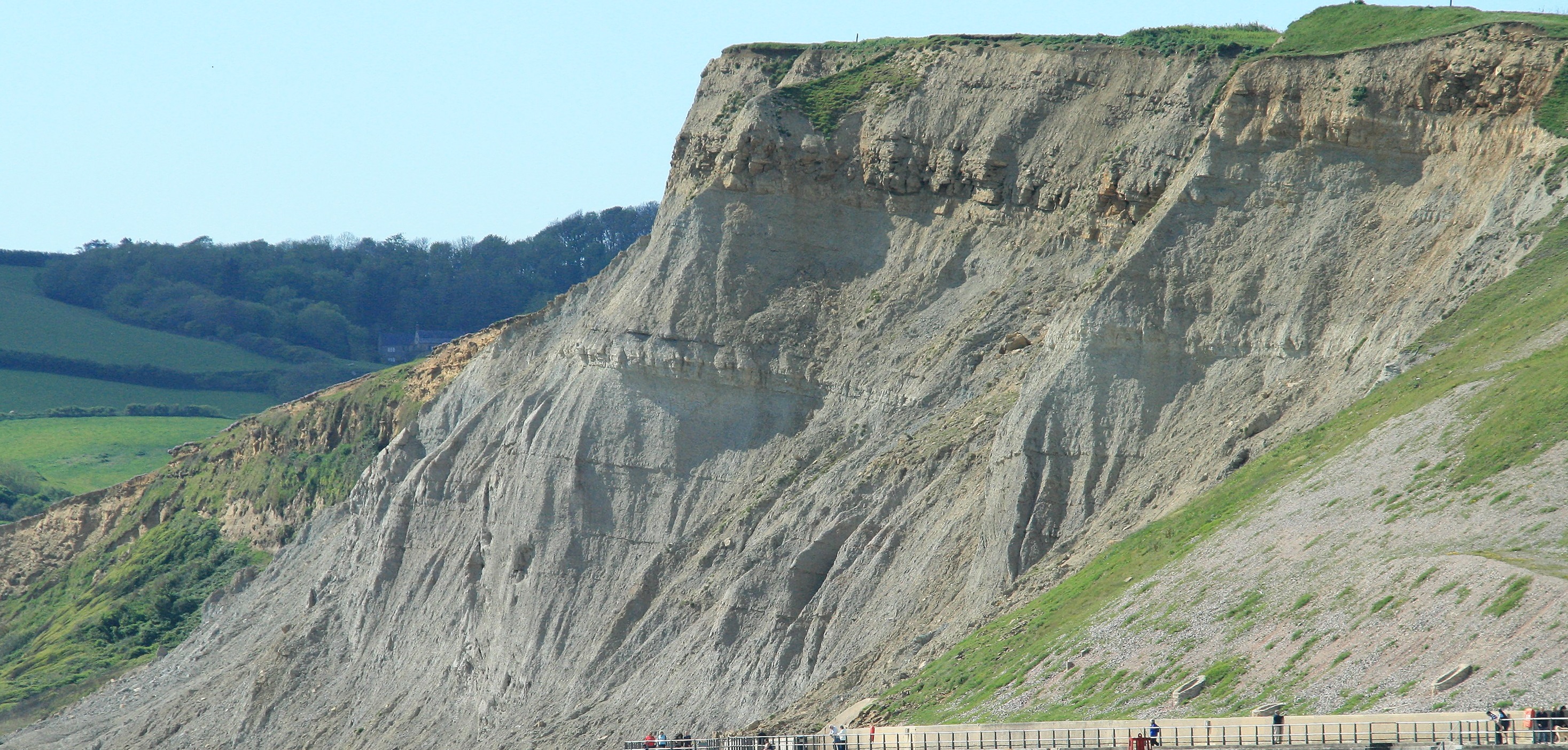
Geological Faults

 |
West Bay Geology
Geological Faults |
 |
Geological Faults come in many different types, just like faults with rowing technique! if they end up moving rocks in a near vertical direction they are called "Normal" faults, whereas if they cause movement in a horizontal direction then they are called "Strike-Slip" faults. We have very good examples of both of these in our local area, and (with a few exceptions) much of the Geography that we see today of river valleys, hills, cliffs is all generated by the pattern of faulting.
The image below shows a range of different types of faults and how the rocks move in relation to each other.

In this diagram the Normal faults are prefixed with the term Dip-Slip. This is the American term, and in the UK this is normally omitted. You can see that there are two types of normal fault. Where rocks are being stretched (or in extension) then typically you get a fault as shown on the left. Note how the total width of the block of crust has been widened by the action of the fault. In the middle example the crust has been under compression resulting in what is called a "Reverse" Normal fault. During the Jurassic our part of the world was in general being stretched, making room for the growth of the emerging Atlantic Ocean, so most Normal faults are of the first type.
In many areas faults are very common, an indication of how dynamic the Earth's crustal plates are. Faults provide a very useful way of determining the history of a particular part of the earth's crust. If faults are seen to cross over other faults then the later faults must predate the first ones, and this allows a sequence of stretching or compression events to be inferred for any one area. In West Bay we have the Eype Mouth fault running East/West that indicates a period of stretching in the North/South Direction. This has then be offset by the later Mangerton Fault which runs in a North/South direction indicating some form of clockwise rotation of the Earth's crust, more on this in section B later.
One final thing to note, modern day earthquakes are almost invariably caused by movement along faults. When you hear of an earthquake happening in a place such as California, this is almost certainly an indication of active movement along the Strike-Slip San Adreas fault which runs down the length of the West coast of the US. In a similar, though less noticeable vein, when the BBC talked a little while ago about there being a small earthquake in Gloucestershire, this would also have been an indication of active movement along an existing fault plane, though in this case the fault will be much further underground and the movement less than would typically be the case in California.
Next Section - Other Influences on Rocks
Previous Section - Influence of Sea Level
Back to Introduction